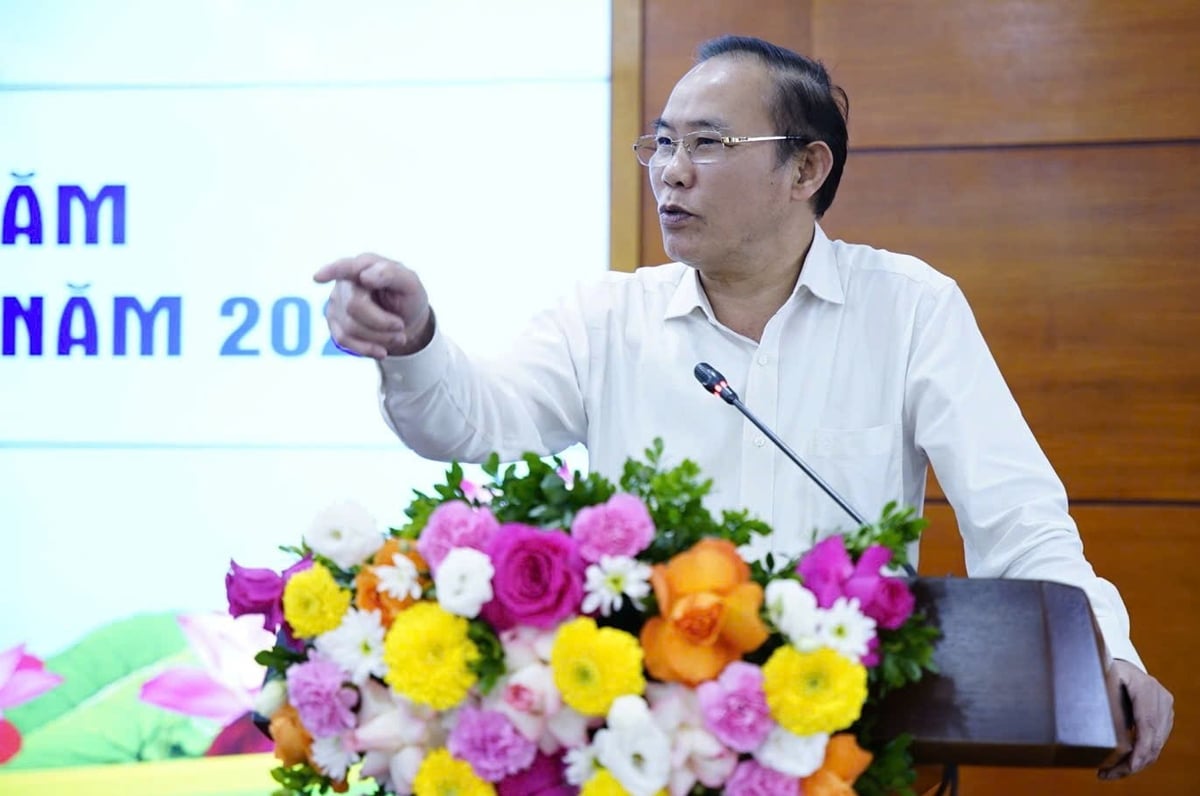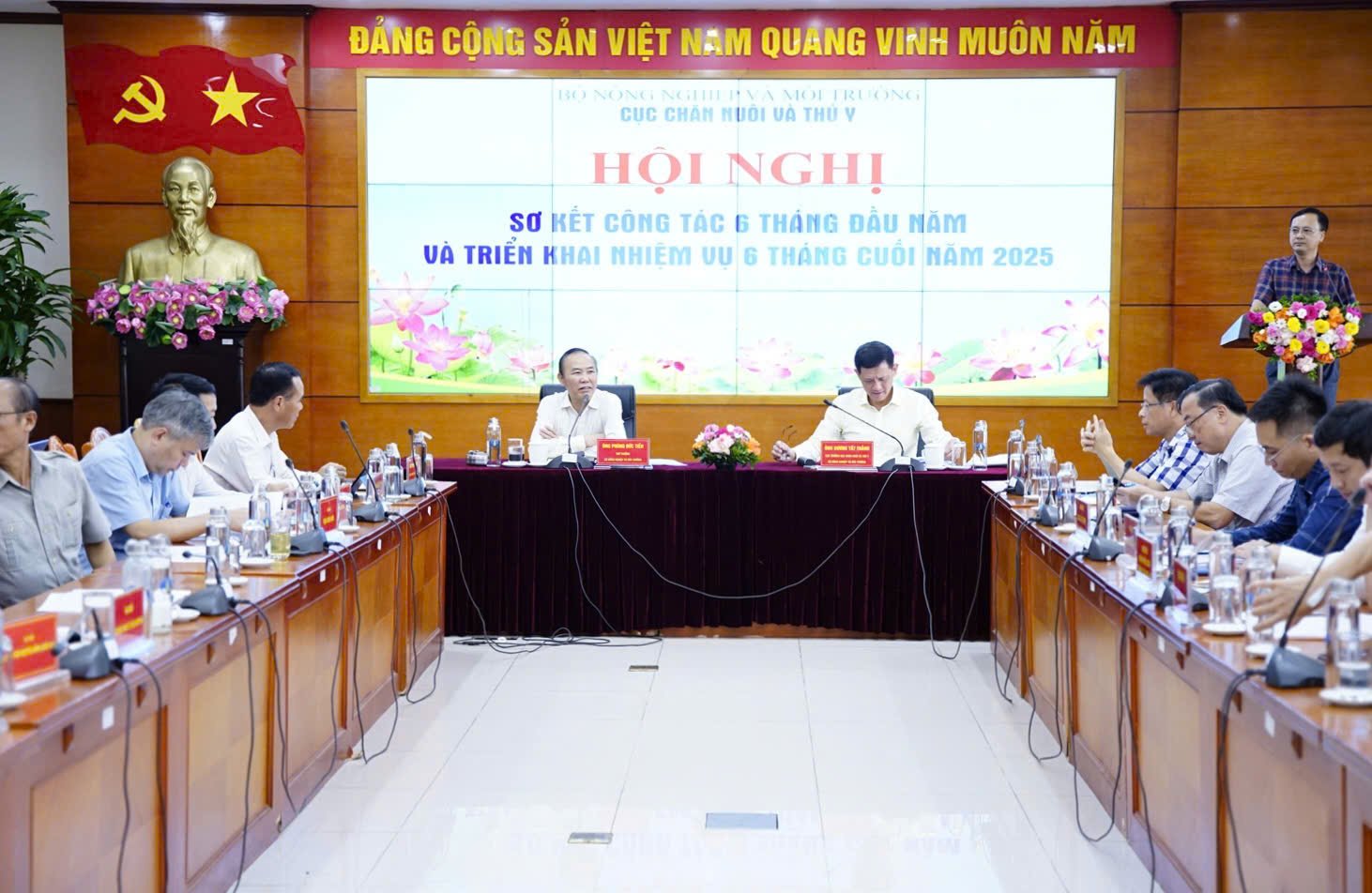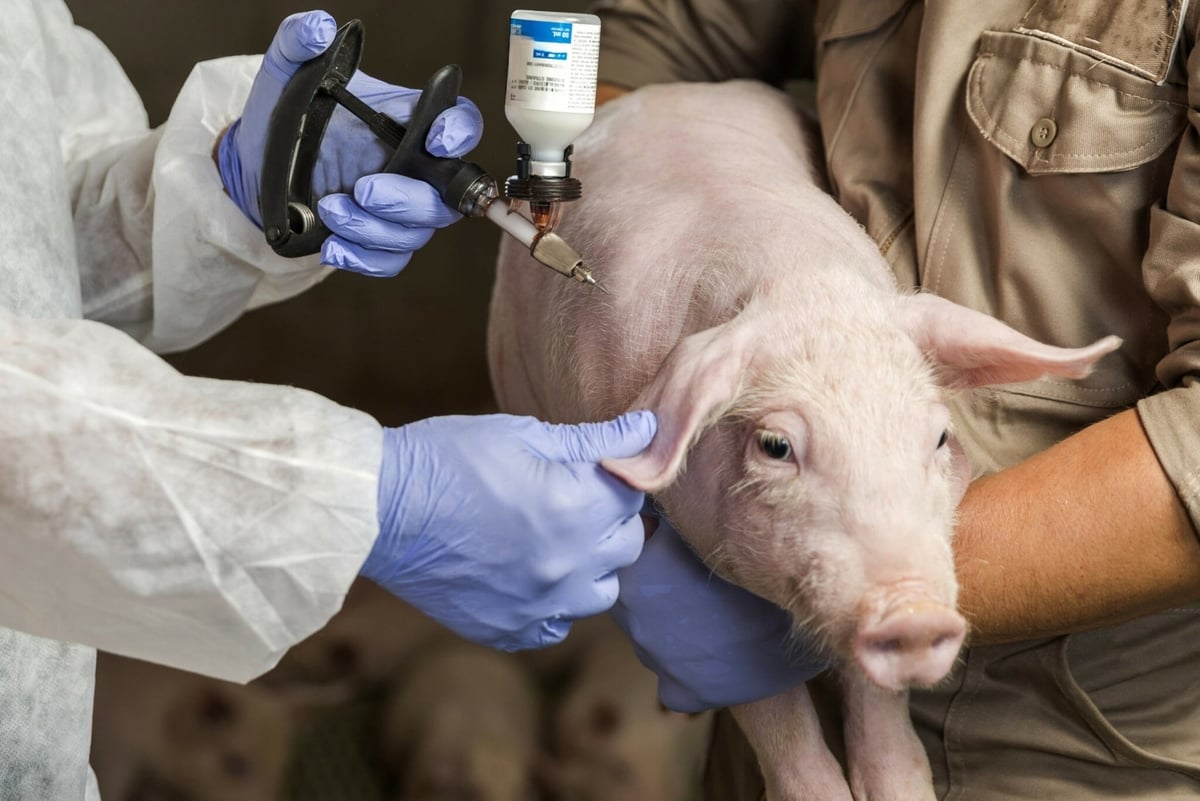December 31, 2025 | 12:43 GMT +7
December 31, 2025 | 12:43 GMT +7
Hotline: 0913.378.918
December 31, 2025 | 12:43 GMT +7
Hotline: 0913.378.918
Speaking at the preliminary review meeting of the Department of Livestock Production and Animal Health on the afternoon of July 22, Deputy Minister Phung Duc Tien stated that with the organizational structure now consolidated after merging, the "running and queuing" situation could no longer continue. Instead, there must be a comprehensive review of the entire regulatory system, from decrees and circulars to technical standards and regulations.

Deputy Minister Phung Duc Tien suggested that institutes and centers should propose interdisciplinary topics with a strategic vision associated with national products and value chains. Photo: Linh Linh.
The Deputy Minister specifically emphasized the need to cut administrative procedures and promote digital transformation drastically. In the context of persistently low poultry prices for many years, complex smuggling activities, and the severe progression of African Swine Fever (ASF), the Deputy Minister urged the sector to proactively grasp the situation, provide timely advice, and prevent a "local hands-off" attitude that harms farmers.
Diseases like avian flu, foot-and-mouth disease, and lumpy skin disease have been relatively well-controlled, but African Swine Fever alone has caused 30 trillion VND in damages and still lacks a suitable policy framework. The Deputy Minister asked, "Vaccines are available, but why haven't they been administered yet? Is it necessary to build a national program?"
Regarding science and technology, Deputy Minister Phung Duc Tien suggested that institutes and centers should propose interdisciplinary projects with a strategic vision linked to national products and value chains. He noted the importance of rectifying the operations of project acceptance councils to avoid formality and resource waste.
The Deputy Minister also addressed vaccine and veterinary medicine management, calling for establishing robust institutions and stable financial resources to prevent counterfeit drugs and substandard vaccines. Additionally, he emphasized that trade promotion needs to be substantive, resolving obstacles in exporting livestock products to key markets like China.
In the field of human resources, the Deputy Minister requested mobilizing resources from sub-departments, academies, centers, and localities to build a uniform workforce, especially at the commune level and in border areas, where outbreaks are prone to recurrence and smuggling activities are complex.
"The Department of Livestock Production and Animal Health must truly lead the way in agriculture, maintaining its position in the new phase," the Deputy Minister stressed.

Deputy Minister Phung Duc Tien and Director of the Department of Animal Husbandry and Veterinary Medicine Duong Tat Thang chaired the Conference. Photo: Linh Linh.
Reporting on the preliminary review, Director General Duong Tat Thang of the Department of Livestock Production and Animal Health noted that despite facing many challenges, the livestock and animal health sector achieved an impressive growth rate of 5.3% in the first six months of 2025, creating momentum to meet the full-year targets.
According to Mr. Thang, the government set a 4% growth target for the agriculture and environment sector, with the livestock sector aiming for 5.7 to 5.98%. This is a significant challenge, but in the first half of 2025, the entire industry achieved a 5.3% increase, surpassing the Department's projected scenario (5.28%), thanks to a surge in the second quarter (up 5.55%).
In terms of production, the total pig herd nationwide is estimated at 27.23 million head, a 3.8% increase compared to the same period; live hog output increased by nearly 6%. The poultry flock reached over 585 million birds, up 4%; egg production topped 10.5 billion units, up 4.3%. Although buffalo and cattle herds decreased slightly, meat production still increased. Notably, milk production reached nearly 681 thousand tons, up 5.8%.
One factor supporting production was the decrease in feed raw material prices. Prices of soybean meal, rice bran, and DDGS (dried distillers grains with solubles) all sharply declined, leading to a 3-9% reduction in mixed feed costs, which facilitated herd rebuilding.

Vietnam aims to build a national strategy to tackle African Swine Fever.
The market also saw positive developments. Live hog prices began to rise early in Q1, at times exceeding 80,000 VND/kg in Dong Nai, making it profitable for farmers. Livestock product exports reached 264 million USD, an increase of over 10%, with over 300,000 breeding pigs and suckling pigs primarily exported to Hong Kong (China), Malaysia, and the UK.
However, the Director General also warned that disease outbreaks remain complex. As of mid-July, there were still over 300 active ASF outbreaks nationwide that had not passed the 21-day mark. Some sporadic outbreaks of lumpy skin disease, avian flu, and foot-and-mouth disease also appeared. The Department has issued 8 guiding documents and dispatched numerous working groups to localities to inspect and supervise disease prevention efforts.
A notable highlight was the organizational structure. Mr. Thang described the merger of the two Departments of Livestock Production and Animal Health as "a historic step." To date, the new department has 24 units, including 11 divisions, 7 regional sub-departments, and 6 centers. Since July 1, all 7 regional sub-departments and two central diagnostic centers have operated under the new mechanism.
Director General Duong Tat Thang also addressed the situation of grassroots veterinary services after the government's shift to a two-tier administration. Currently, 15 provinces still maintain inter-commune veterinary systems, and 6 provinces still have commune-level veterinary staff. He affirmed that this force is crucial in disease surveillance and needs continued consolidation.
For the latter half of the year, the Department identified key tasks as completing institutional frameworks (including amendments to the Law on Livestock Production and the Law on Animal Health), controlling diseases, promoting digital transformation, enhancing productivity, and developing export markets.
Translated by Dieu Linh
/2025/12/29/0829-2-000508_274.jpg)
(VAN) Hai Phong is tightening management, with 100% of fishing vessels licensed and equipped with vessel monitoring systems, joining the national effort to lift the EC's 'yellow card.'
/2025/12/27/2744-1-121716_241.jpg)
(VAN) The Viet Nam Environment Protection Fund is the national environment protection fund and a state financial institution under the Ministry of Agriculture and Environment.
/2025/12/27/2015-2-111213_813.jpg)
(VAN) In efforts to realize the goal of Net Zero emissions, reducing urban emissions is regarded as a key solution.

(VAN) Deputy Prime Minister Tran Hong Ha requested to design the EPR mechanism toward a circular economy that is transparent, feasible, and non-administrative and aligned with actual recycling capacity.

(VAN) On December 24, Deputy Prime Minister Tran Hong Ha chaired a meeting about approving greenhouse gas emission quotas for 2025 - 2026 period.

(VAN) As Viet Nam enters a new era, the national agricultural sector must proactively adapt to global trends to transform current challenges into strategic development opportunities.
/2025/12/18/5046-3-154320_307.jpg)
(VAN) Granting planting area codes is a solution that helps Lao Cai manage forests effectively while also laying a data foundation to support the development of the carbon credit market in the future.